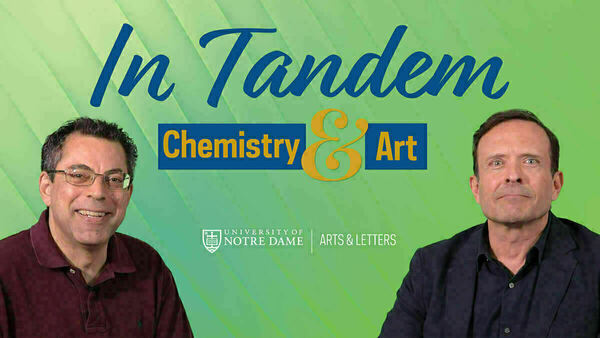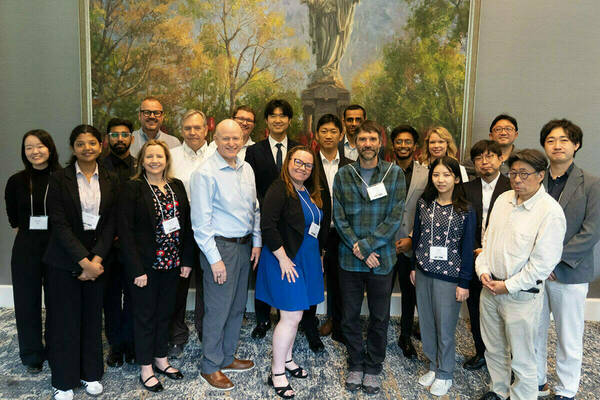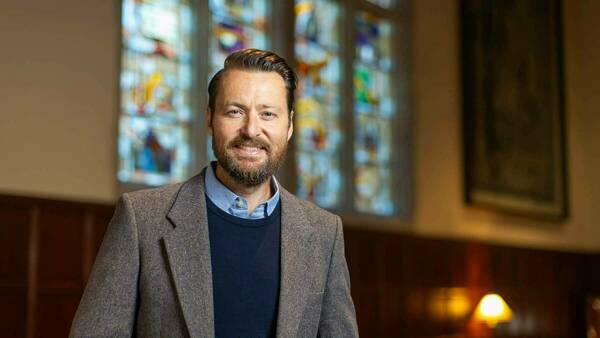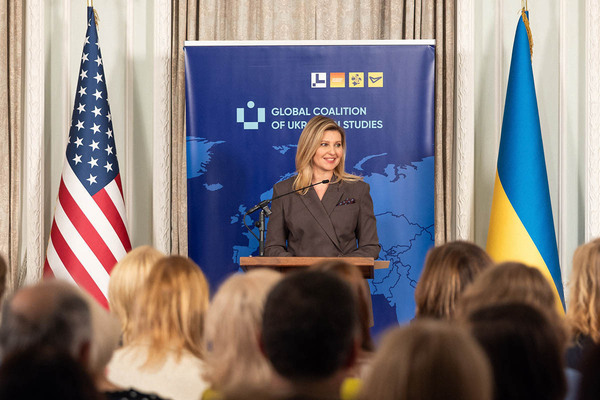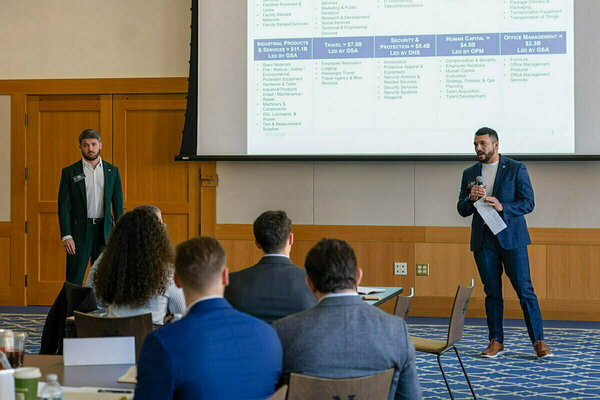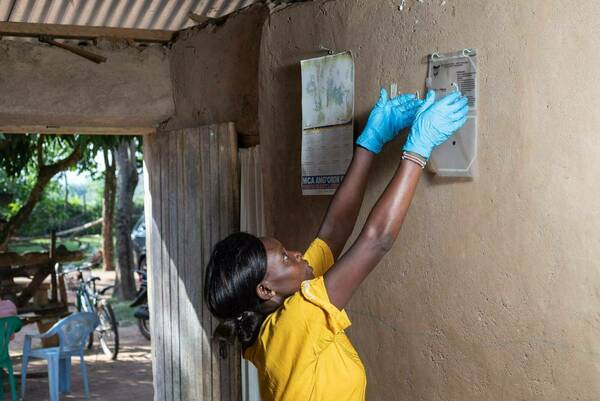In Tandem: What an art historian and chemist learned by teaching a class together
How do you bridge the gap between two drastically different fields? For a Notre Dame art historian and chemist, all it took was sharing a classroom for a semester.
Only Connect Chemistry and Art is a course that integrates human experiences by exploring the intersection of two disciplines that, nevertheless, share surprising aspects in common. Taught by Michael Schreffler, a professor of art history and associate dean for the arts in the College of Arts & Letters, and Bahram Moasser, a teaching professor in the Department of Chemistry & Biochemistry with the College of Science, the class explores how art and chemistry enrich each other and, at a deeper level, have a common approach to inquiry.
A new College of Arts & Letters video series titled “In Tandem” showcases the importance and value of interdisciplinary research and teaching. In this first installment, Schreffler and Moasser discuss how they began working together, the surprising connections they’ve discovered between art and science, and the ways in which exploring another field has broadened their perspective.
The title of the course is drawn from the epigraph of the E.M. Forster novel Howard’s End, which, through the phrase “Only connect!”, extols the virtues of bringing disparate elements together. Schreffler, who is also the director of Notre Dame’s Arts Initiative, and Moasser have taught the course the past two spring semesters, and no prerequisites are necessary. It fulfills the Core Integration Ways of Knowing requirement in Notre Dame’s Core Curriculum, and is ideal for any student looking to explore connections between disciplines.
Originally published by at al.nd.edu on September 23, 2025.
Latest Research
- NSF Cyber SMART’s fall meeting shapes fifth year of project, legacy and future plans, and adds new memberThe U.S. National Science Foundation (NSF) Cyber SMART center gathered for its fall meeting on the University of Notre Dame campus this September. The meeting served as a checkpoint with progress reports and new projects from research leads and students…
- Slavic and Eurasian studies professor wins Humboldt fellowship to research how Russia’s religious past shapes its presentWhen Russia invaded Ukraine on Feb. 24, 2022, Sean Griffin realized his second book needed a new title. Griffin, an associate professor in the University of Notre Dame’s Department of…
- Notre Dame’s R.I.S.E. AI Conference builds interdisciplinary collaboration to inform human-centered artificial intelligenceAs artificial intelligence (AI) transforms nearly every sector of society — from healthcare and education to governance and global development — a critical question emerges: How can we conscientiously design and deploy these powerful technologies to positively impact society? This…
- University of Notre Dame joins the Global Coalition of Ukrainian StudiesThe University of Notre Dame has joined the Global Coalition of Ukrainian Studies after signing a Memorandum of Cooperation (MOC), formalized on September 24, 2025, at the Ukrainian Institute of America in New York City. Notre Dame joined four other American…
- The University of Notre Dame’s Mendoza College of Business and Industry Labs team up to inspire national security manufacturing competitiveness in the regionThe South Bend - Elkhart Region is full of manufacturing companies that are poised to grow, and Executive Master of Business Administration (EMBA) and Master of Business Administration (MBA) students at the University of Notre Dame are finding innovative ways to contribute to that growth. Earlier…
- Notre Dame research informs WHO conditional recommendation for spatial repellents in malaria vector controlThe World Health Organization (WHO) recently announced a “conditional recommendation” for spatial emanators, also known as “spatial repellents,” in the fight against malaria. This key determination was informed by spatial repellent studies that included the Advancing Evidence for the Global Implementation of Spatial Repellents (AEGIS) Project in Kenya, led by the University of Notre Dame and funded by Unitaid. The findings from this particular study were recently published in The Lancet.



